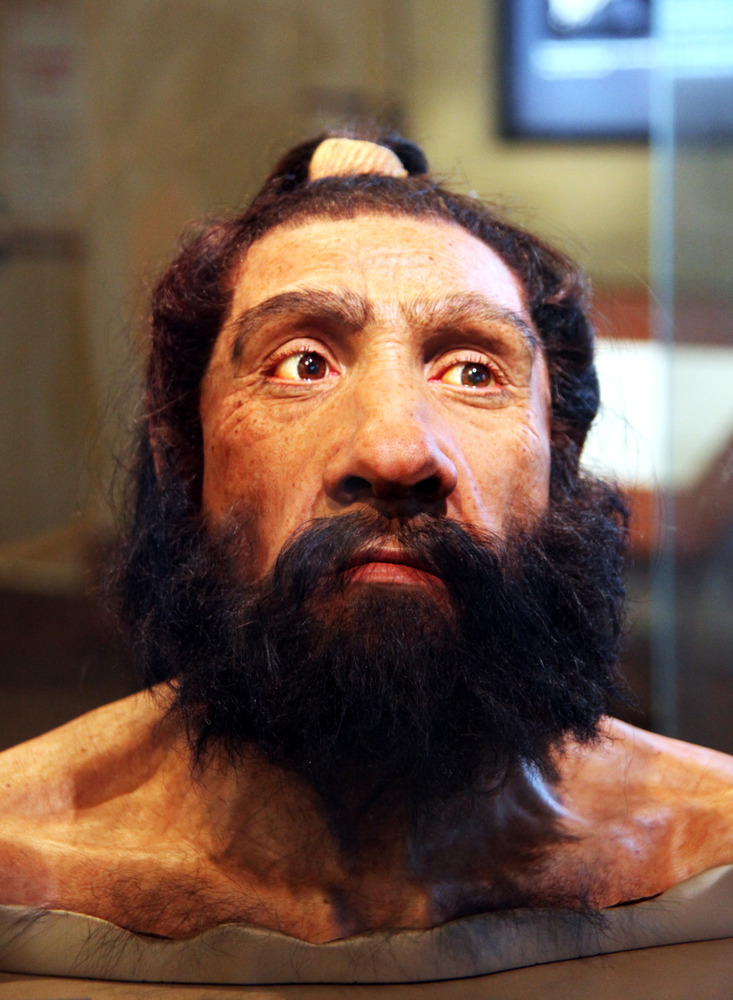DNA from modern humans and Neanderthals reveals ancient interbreeding of the two species.
As the success of family history TV programmes shows,  we seem to be endlessly fascinated with our ancestors. But tracing your great-great-great-great aunt is nothing compared to what scientists have announced this week.
we seem to be endlessly fascinated with our ancestors. But tracing your great-great-great-great aunt is nothing compared to what scientists have announced this week.
A pair of papers published in the journals Science and Nature, looks at how our Neanderthal ancestors have left genetic traces in our genomes today.
Modern humans, Homo sapiens, and Neanderthals split apart in Africa more than half a million years ago. But while humans stayed in Africa, Neanderthals went off to explore Europe and Asia.
When we finally left Africa less than 100,000 years ago, there's good evidence that these early adventurers interbred with the Neanderthals living between Western Europe and Siberia.
Comparing DNA from Neanderthal bones with our own tells us that around 2 per cent of the genomes of people descended from non-African populations is Neanderthal.
The Neanderthal genes are scattered across the genome, and different people have different ones. Previous research has pinned down a few of these, for example genes involved in responding to infections or UV radiation from the sun.
Now the new research, from two separate teams of researchers in the US, has looked at much larger parts of the modern human genome that probably came from our Neanderthal cousins, who died out around 30,000 years ago.
The scientists used computer programmes to pinpoint sequences in our modern DNA that looked like they were much older, and compared them with the Neanderthal genome to pick out regions that probably came from them.
One team of researchers found about one-fifth of the Neanderthal genome spread across the genomes of more than 600 currently-living Europeans and East Asians, while the others put together about 40% of the Neanderthal genome from the DNA of more than a thousand living people.
The data shows that while this interbreeding may have given our human ancestors useful genes for coping with the cold of northern Europe, the downside was that the Neanderthal/human hybrids probably had fertility problems.
There's also evidence that Neanderthals gave us gene variations linked to certain diseases, including type 2 diabetes, and depression, as well as immune system-related diseases such as lupus, biliary cirrhosis and Crohn's disease.
Curiously, the scientists also found that Neanderthals gave us smoking addiction, although this gene is probably involved in some other biological process, as there's no evidence at all that they liked to light up a cigarette in their caves.
Some genes are found in humans and not Neanderthals. One intriguing example is the gene FOXP2, involved in speech and language, which is in our DNA today but doesn't seem to exist at all in the Neanderthal genome.
There are also big chunks of the Neanderthal genome that are nowhere to be seen in our modern human DNA, suggesting these genes were harmful for us.
So far, the researchers have only looked at comparisons with Neanderthals and modern humans from populations that came out of Africa. But it would be interesting to look more closely at the genomes of modern Africans, as well as people all over the globe, to see if there's any more evidence of interbreeding with long-extinct populations way back in our family trees.
References
- Previous Preventing peanut allergies
- Next Antioxidants accelerate cancers









Comments
Add a comment